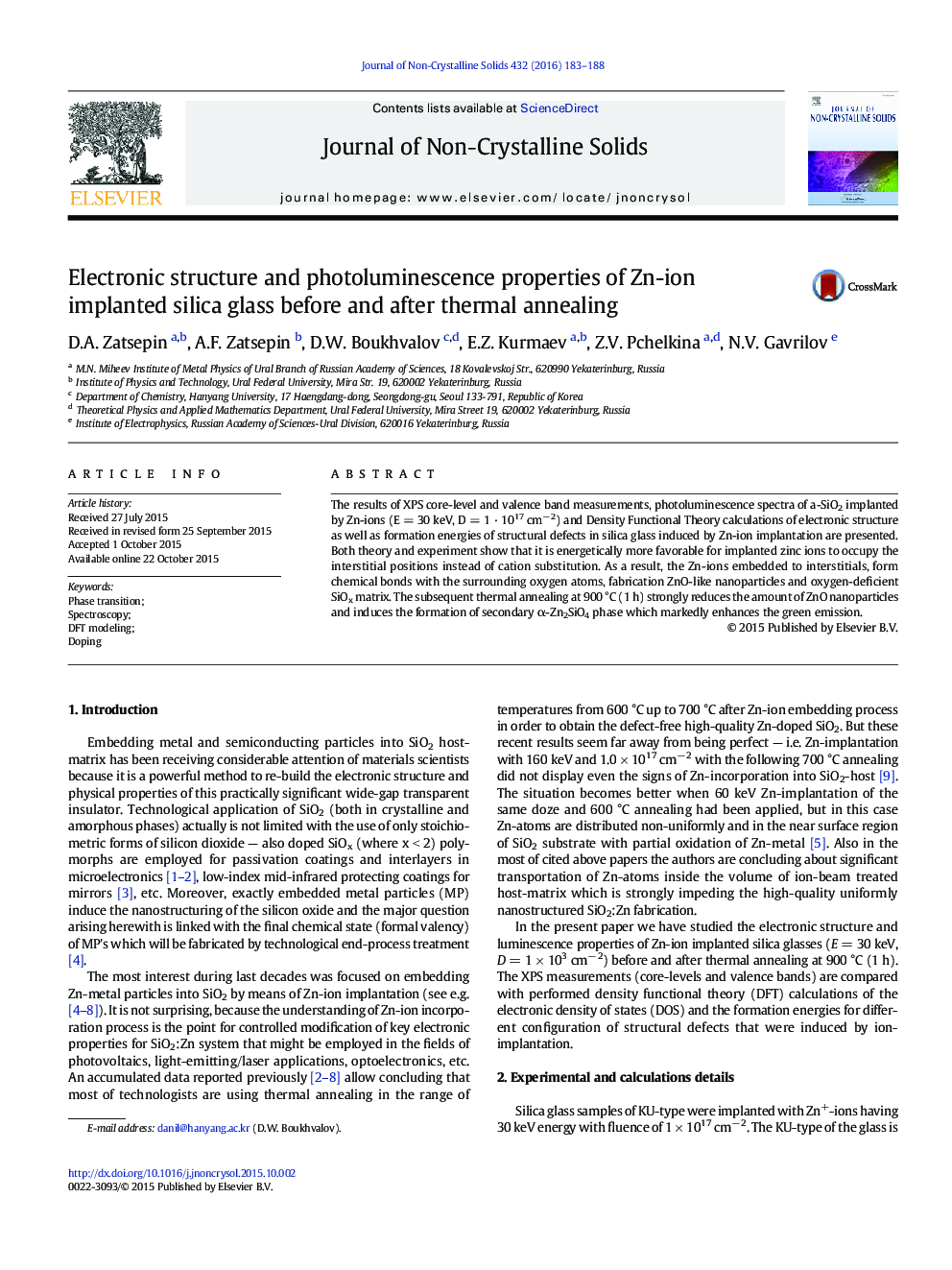| کد مقاله | کد نشریه | سال انتشار | مقاله انگلیسی | نسخه تمام متن |
|---|---|---|---|---|
| 1480402 | 991462 | 2016 | 6 صفحه PDF | دانلود رایگان |
• Amorphous SiO2 matrix was doped by Zn-ion with further annealing.
• Measurements and calculations demonstrate formation of ZnO nanoclusters after ion implantations.
• Further annealing provides formation of secondary Zn2SiO4 phase.
• Formation of secondary phase also discussed in theory and confirmed in optics measurements.
The results of XPS core-level and valence band measurements, photoluminescence spectra of a-SiO2 implanted by Zn-ions (E = 30 keV, D = 1 · 1017 cm− 2) and Density Functional Theory calculations of electronic structure as well as formation energies of structural defects in silica glass induced by Zn-ion implantation are presented. Both theory and experiment show that it is energetically more favorable for implanted zinc ions to occupy the interstitial positions instead of cation substitution. As a result, the Zn-ions embedded to interstitials, form chemical bonds with the surrounding oxygen atoms, fabrication ZnO-like nanoparticles and oxygen-deficient SiOx matrix. The subsequent thermal annealing at 900 °C (1 h) strongly reduces the amount of ZnO nanoparticles and induces the formation of secondary α-Zn2SiO4 phase which markedly enhances the green emission.
Journal: Journal of Non-Crystalline Solids - Volume 432, Part B, 15 January 2016, Pages 183–188
